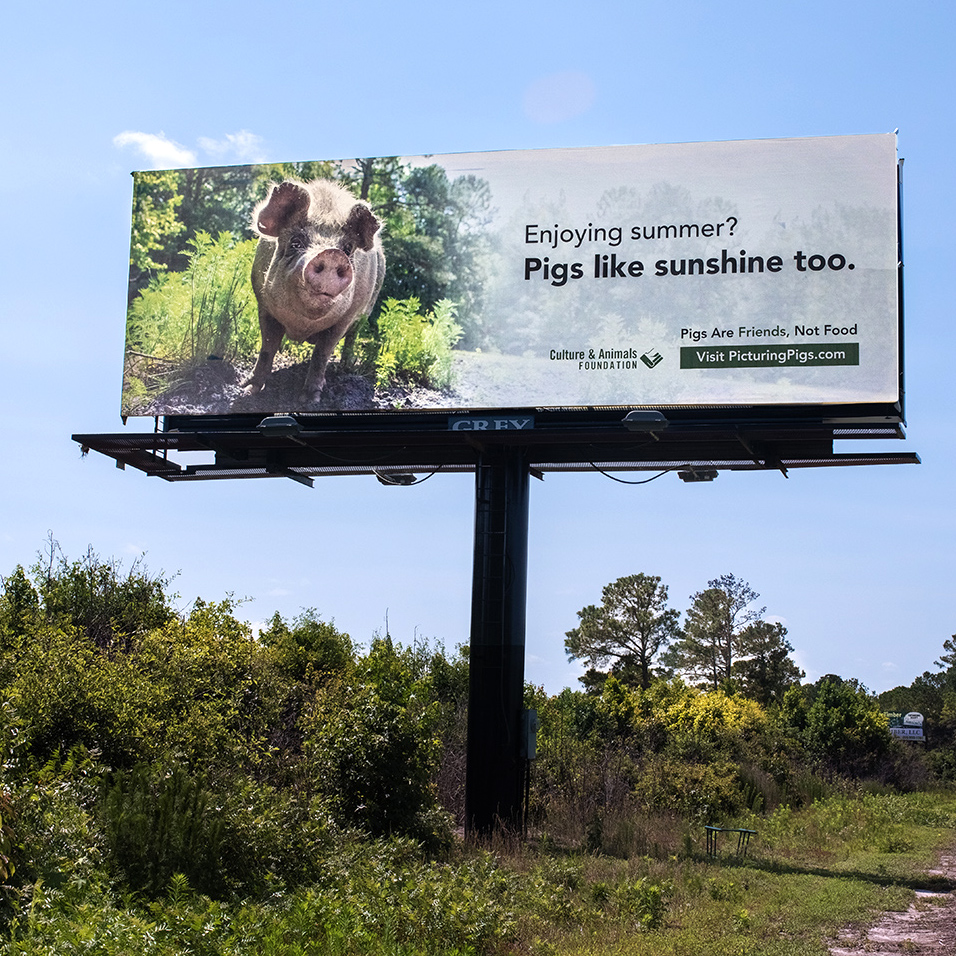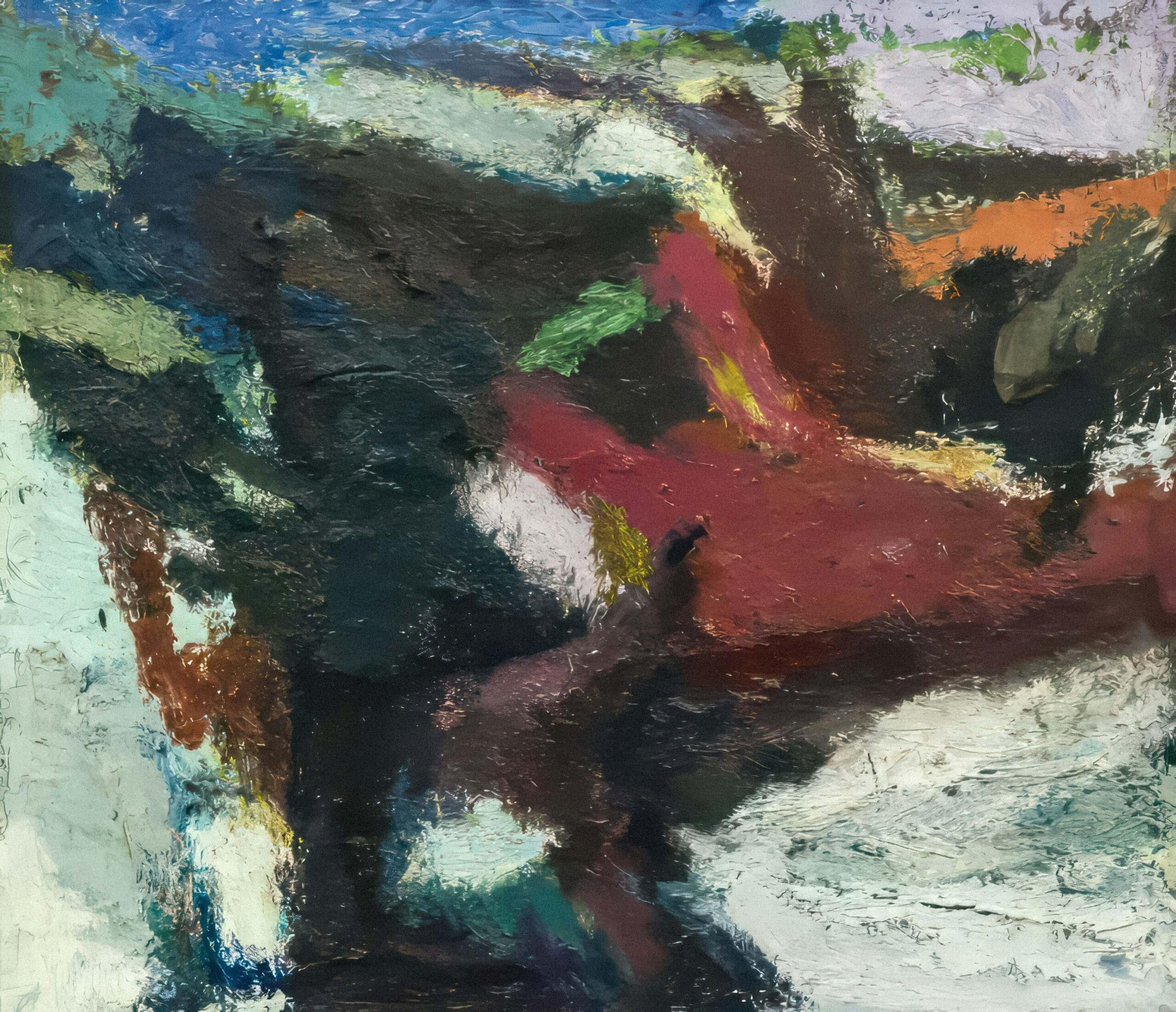When photographers Mary Shannon Johnstone and Jane M Casteline received a grant for “Picturing Pigs,” they couldn’t have imagined the obstructions—both literal and metaphorical—they’d face. Martin Rowe explains.
 The plan was simple: “Picturing Pigs” would consist of three billboards placed along a highway in North Carolina. Each billboard would feature a photo of a pig or pigs enjoying life, with taglines that expressed such radical sentiments as “Life is better with friends: Pigs think so too,” and “Enjoying summer? Pigs like sunshine too.”
The plan was simple: “Picturing Pigs” would consist of three billboards placed along a highway in North Carolina. Each billboard would feature a photo of a pig or pigs enjoying life, with taglines that expressed such radical sentiments as “Life is better with friends: Pigs think so too,” and “Enjoying summer? Pigs like sunshine too.”
However, when Mary and Jane contacted the billboard companies in Duplin and Sampson counties, where the billboards were to be placed along I-40, even the one company that signed a contract reneged when it saw the images. Four others rejected them outright. As Mary told the Charlotte Observer, which ran a story on the situation, “They were happy to work with us until they saw the images. We asked repeatedly, ‘What is the problem?’ They wouldn’t say anything, other than, ‘We cannot fulfill your contract anymore.’” Was it a coincidence that one of the billboard companies was owned by the Murphy family, which happened to also own the largest hog-farming operation in North Carolina, which in turn merged with Smithfield Foods, the largest raiser and slaughterer of pigs on the planet? Was it also a coincidence that Duplin and Sampson counties contain the most hogs in the entire United States? And was it still another coincidence that North Carolina had some of the most restrictive “ag-gag” laws in the nation, before the Fourth Circuit struck down the law as unconstitutional in February 2023?
Let’s be clear: Mary and Jane aren’t naive. They knew the billboards, for all their anodyne messaging, would be provocative. First off, the photos were displaying pigs (who live at Blind Spot and Sisu refuges) in their natural habitat, which is the case for virtually none of the 8.3 million pigs raised in North Carolina each year. Secondly, they were showing these animals not as food-production units, but sentient creatures enjoying one another’s company. The Smithfield pigs don’t experience sunshine, touch soil, or go for a walk or wallow. They’re confined indoors on concrete for the entirety of their short lives—invisible to passersby or even the communities that have to live downwind of the smell and spray of ordure that fills the lagoons and the air around the factory farms. (For more on the horrendous environmental and health challenges facing neighbors of factory farms in these counties, watch the documentary film The Smell of Money and read Corban Addison’s Wastelands: The True Story of Farm Country on Trial, now in paperback.)
 Eventually, Mary and Jane found a billboard company that agreed to put the images up, only to discover that the billboards were shrouded in foliage (see left). It seemed emblematic of the cover-up that shrouds Big Ag’s operations—from the deception of the Piggly-Wiggly logo that displays a pig as its own butcher, through to the ag-gag laws that make it illegal to photograph a factory farm, through to the invisibility of the workers who toil in shocking conditions in slaughterhouses, and to the industry’s scandalous use of child labor to keep its operations going. How ironic then that one of Mary and Jane’s billboards should have been placed beneath a sign demanding “Stop Human Trafficking” (above left): the federal government has begun investigating whether slaughterhouses are themselves engaged in human trafficking.
Eventually, Mary and Jane found a billboard company that agreed to put the images up, only to discover that the billboards were shrouded in foliage (see left). It seemed emblematic of the cover-up that shrouds Big Ag’s operations—from the deception of the Piggly-Wiggly logo that displays a pig as its own butcher, through to the ag-gag laws that make it illegal to photograph a factory farm, through to the invisibility of the workers who toil in shocking conditions in slaughterhouses, and to the industry’s scandalous use of child labor to keep its operations going. How ironic then that one of Mary and Jane’s billboards should have been placed beneath a sign demanding “Stop Human Trafficking” (above left): the federal government has begun investigating whether slaughterhouses are themselves engaged in human trafficking.
In spite of all the obstructions they faced, Mary and Jane persevered. They wrote an op-ed about their experiences and the Charlotte Observer turned it into an investigative piece. They’re also making a documentary film about “Picturing Pigs.” And, finally, although the contract on the billboards has expired, at the time of writing this piece, the stars of “Picturing Pigs” are still gracing the highway—at least partially. With any luck, the story of how Big Ag continues to do all it can to make sure you’re never see or think about who is the source of your pork products, will run and run, and what was invisible will be made a little more visible.




